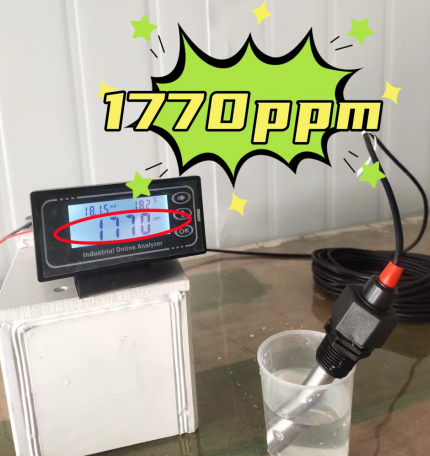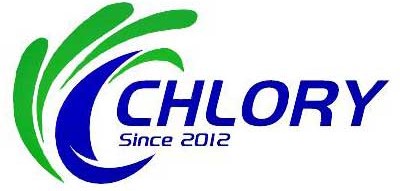Characteristics and advantages of hypochlorous acid
Research literature on the application and effects of hypochlorous acid in food processing and tableware disinfection shows that hypochlorous acid, as an efficient and safe disinfectant, has broad application prospects and significant bactericidal effects.
Broad-spectrum bactericidal : It has a strong killing effect on bacteria (such as E. coli, Salmonella), viruses (including norovirus, influenza virus) and fungi.
High safety : Low concentration (50-100 ppm) can effectively disinfect, and it is harmless to the human body (non-toxic and non-irritating when oral), and is suitable for food contact surfaces.
Environmental protection : The decomposition products are water and trace chloride, with no residual toxicity.
Application scenarios in restaurants
Surface disinfection : dining tables, tableware, kitchen utensils, cutting boards, etc., replacing traditional chlorine-containing disinfectants (such as 84 disinfectant) to reduce corrosiveness and odor.
Food processing : Spray or soak vegetables and fruits (recommended concentration ≤50 ppm) to extend the shelf life and reduce the risk of foodborne diseases.
Hand disinfection : replaces alcohol, avoids dry skin, and is suitable for employees' frequent disinfection needs.
Air purification : Atomized hypochlorous acid can reduce the microbial load in the air (the concentration needs to be controlled to avoid metal corrosion).
Key data from research support
Effectiveness : Studies have shown that 80 ppm hypochlorous acid can inactivate 99.9% of foodborne pathogens (such as Listeria) in 30 seconds.
Comparative test : Compared with quaternary ammonium disinfectants, hypochlorous acid is more effective in removing biofilm (Food Control, 2020).
Actual case : Some restaurants in Japan use slightly acidic hypochlorous acid water (pH 5-6.5) to treat sashimi, which significantly reduces microbial contamination.
Precautions for use
Concentration control : 50-100 ppm is recommended for food contact surfaces and ≤200 ppm for air disinfection.
Stability : It needs to be prepared and used immediately or a stabilized product (such as electrolytic generation equipment) should be selected.
Corrosiveness : Long-term use may cause slight corrosion to metals (especially iron and copper). It is recommended to rinse or use plastic/stainless steel materials.
Regulations and standards
International : The U.S. FDA has approved hypochlorous acid for use in food processing (21 CFR 173.315), and Japan recognizes it as a food additive.
China : GB 14930.2-2012 stipulates that food-grade hypochlorous acid can be used to disinfect fruits, vegetables and tableware.
Applications in food processing :
1. Hypochlorous acid is widely used in the food processing industry, including the production and processing of meat, poultry, seafood, fruits and vegetables. It can effectively kill bacteria, viruses and fungi, ensuring food safety without changing the flavor, color or texture of food.
2. In the aquatic food industry, hypochlorous acid can effectively remove pathogenic bacteria and pesticide residues in aquatic products, extending the shelf life without affecting the taste and appearance.
3. Hypochlorous acid is also used to sterilize and preserve fresh fruits and vegetables, reduce pesticide residues, and extend the storage period.
Application in tableware disinfection :
1. Hypochlorous acid disinfectant is widely used in the disinfection of tableware, kitchen utensils and kitchen appliances. Its low concentration can achieve a sterilization effect, and there is no residue, which is environmentally friendly after use.
2. Studies have shown that hypochlorous acid disinfectant has a significant sterilization effect on tableware, is suitable for immersion or spray disinfection, and is non-toxic and harmless to the human body.
3. The method of using hypochlorous acid disinfectant includes soaking tableware in a solution with a dilution ratio of 1:9 for 10-20 minutes, and then washing with clean water.
Effects and advantages :
1. Hypochlorous acid has a broad-spectrum bactericidal ability and can quickly kill pathogenic microorganisms such as Escherichia coli, Salmonella, etc.
2. It is a weak acidic substance with little irritation to human skin and eyes and is highly safe.
3. Hypochlorous acid decomposes to produce water and oxygen, without any secondary pollution, meeting environmental protection requirements.
Regulations and Standards :
1. As a food additive and disinfectant, hypochlorous acid has received regulatory support in many countries and regions. For example, the US FDA has recognized hypochlorous acid as a liquid antibacterial agent that can be used in food processing and tableware disinfection.
2. Domestic relevant standards such as GB/T36758-2018 stipulate the usage concentration and preparation method of hypochlorous acid disinfectant.
The application of hypochlorous acid in food processing and tableware disinfection is characterized by high efficiency, safety and environmental protection, and is an important choice in the field of food processing and tableware disinfection in the future.
The actual application cases of hypochlorous acid in the catering industry and their effect evaluation are as follows:
Tableware disinfection : Hypochlorous acid is widely used to disinfect tableware in the catering industry, and its sterilization effect is significant. Studies have shown that the sterilization rate of hypochlorous acid on tableware can reach 96.8%, which is 50.6% higher than that of ordinary dishwashers, significantly improving the hygiene and safety level of the catering distribution industry.
Food processing and preservation : As an efficient and safe disinfectant, hypochlorous acid water can be used to clean food processing equipment, kitchen utensils and food contact surfaces. For example, it can effectively extend the shelf life of food, inhibit the spoilage of pathogenic microorganisms on the surface of fruits and vegetables, and maintain the nutritional content and appearance of food.
Environmental disinfection : Hypochlorous acid can be used for environmental disinfection in catering places, such as ground, elevator and air disinfection. Its non-toxic and residue-free properties make it an environmentally friendly and safe choice.
Food safety assurance : Hypochlorous acid has a high efficiency in killing a variety of pathogens (such as norovirus, Salmonella, E. coli, etc.), and can effectively prevent food poisoning incidents.
Convenience of application : Hypochlorous acid water can be used directly without rinsing, saving water resources and time, while avoiding the environmental pollution and harm to the human body that may be caused by traditional chemical disinfectants.
Effect evaluation : Many studies and actual cases have shown that the application of hypochlorous acid in the catering industry not only improves hygiene and safety standards, but also reduces food spoilage rates and the risk of pathogen transmission. For example, the shelf life of lettuce treated with hypochlorous acid increased from 5 days to 25 days, significantly extending the shelf life.
The application of hypochlorous acid in the catering industry is characterized by high efficiency, safety and environmental protection. Its actual effects in tableware disinfection, food processing, environmental cleaning, etc. have been widely recognized and verified.
Comparative study with traditional disinfectants (such as chlorine bleach)
There are significant differences between hypochlorous acid and traditional chlorine-containing disinfectants (such as chlorine bleach) in terms of disinfection effect, safety, stability and application scope:
Disinfection effect :
1. The bactericidal ability of hypochlorous acid is significantly better than that of traditional chlorine-containing disinfectants. Studies have shown that the bactericidal rate of hypochlorous acid is more than 80 times that of hypochlorite ion (ClO⁻), and it can effectively penetrate the cell membrane of microorganisms, destroy their proteins, nucleic acids and cell walls, thereby quickly killing bacteria, viruses and fungi.
2. Chlorine-containing disinfectants (such as 84 disinfectant) mainly rely on hypochlorite ions in sodium hypochlorite (NaClO) for sterilization, but their sterilization efficiency is greatly affected by pH value and effective chlorine concentration.
Security :
1. Hypochlorous acid is safer for the human body and the environment. It is used in low concentrations and only produces water and trace amounts of sodium chloride after decomposition. It has no pungent odor or harmful residues and is non-irritating to the skin, mucous membranes and respiratory tract.
2. Traditional chlorine-containing disinfectants (such as bleach) are highly corrosive and irritating, and may be harmful to metals, fabrics and the human body. Gloves and masks must be worn when using them.
stability :
1. Hypochlorous acid is unstable in water and easily decomposes to produce harmful substances such as chlorine gas, which leads to a decrease in the effective chlorine content and affects the disinfection effect.
2. Chlorine-containing disinfectants (such as 84 disinfectant) have better stability, but they must be used strictly in accordance with the instructions and avoid mixing with other cleaning agents to prevent chemical reactions from producing toxic gases.
Applications :
1. Hypochlorous acid has a wide range of applications and can be used to disinfect object surfaces, air, secondary water supply equipment and facilities, hands, skin and mucous membranes in medical, household and public places. It is particularly suitable for scenarios that require environmental friendliness and high safety.
2. Chlorine-containing disinfectants are mainly used to disinfect object surfaces, fabrics, water, fruits and vegetables, etc., but due to their corrosiveness and irritation, they are not suitable for direct use on human skin or mucous membranes.
Hypochlorous acid has obvious advantages in sterilization efficiency, safety and application range, but its stability is poor and it needs to add stabilizers or improve the preparation process to extend its validity period. In contrast, although chlorine-containing disinfectants have strong sterilization ability, they have certain safety hazards and usage restrictions.
Compared with other suppliers, our Chlory dvantages:
* Produce max.2000 ppm, other supplier is only 500ppm
* Concentration and pH(3-7) stable adjustment
* Clean anolyte without residual salt
* Our machine does not require pickling and the device cleans itself
* Hypochlorous acid shelflife is 12 months, 24 months is also available
* Skid mounted
* full-auto running
*Our team will always provide you with high quality products, the most professional technical support and service

Contact: Company website: www.chlory.com
Email address: info@chlory.com
